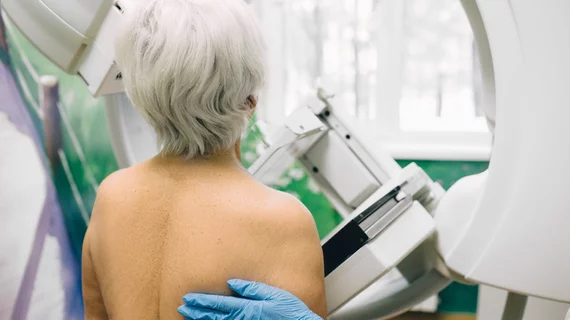Radiology practices should consider screening for this concern to boost mammography compliance rates
Radiology practices should consider screening patients for food insecurity to help bolster mammography uptake, according to a new study published in JACR [1].
Previous research has proven that certain social determinants of health—such as housing instability, care costs and health insurance—can impact adherence to regular checkups. However, scientists have yet to explore whether inadequate access or poor-quality food can impact screening.
Experts sought to better understand this dynamic, interviewing nearly 9,000 mammography-eligible women about their nutritional concerns.
“In a nationally representative cross-sectional survey, participants with food insecurity were less likely to report mammography screening,” Jerome Watts, a medical student at the Howard University College of Medicine in Pittsburgh, and co-authors wrote June 3. “Radiology practices should consider screening patients for food insecurity and social determinants of health,” they added. “Evidence-based food insecurity interventions may increase adherence to mammography screening.”
The analysis targeted female respondents ages 40 to 74 in the 2019 National Health Interview Survey who had no history of breast cancer. Watts et al. assessed food insecurity using a six-item scale developed by the National Center for Health Statistics. A total of 8,956 weighted respondents met inclusion criteria. Of them, 90% were classified as having marginal or high food security, with 57% reporting undergoing breast cancer screening. About 6% were classified as having low food security, with 42% of this group reporting screening. And another 4% were experiencing very low food security and a 43% screening rate. Without any adjustments in the results, the latter two groups were less likely to report attending a mammography screening appointment within the past year.
Altogether, 1 in 10 women eligible for screening mammography had experienced food insecurity. This group was about 15% less likely to undergo breast imaging. Rates of insecurity also were higher among those who are part of racial and ethnic minority groups.
Watts and co-authors speculated that the relationship between food and cancer screening may be a “consequence of competing priorities.” Those without something to eat may be making trade-offs between spending their money and time on nutrition, preventive healthcare or other needs.
Experts see an opportunity for radiology to add value and strengthen its role in the care continuum.
“Radiology practices are often the site at which a patient’s healthcare journey begins, and could be considered an extension of primary care, given central role of radiology in secondary prevention,” the authors wrote. “Over the course of this journey, radiology practices walk along the breast imaging care journey, from screening, follow-up, diagnosis, and screening post-treatment. Each of these interactions can be viewed as an opportunity to not only evaluate the status of overall breast health, but to embrace and maximize opportunities within the imaging encounter, specifically by assessing food security status.”
Watts et al. suggested inquiring about food security in the mammography questionnaire. Other practices outside of radiology also have done so as part of the admissions workflow and intake forms. The study also suggested several resources for helping patients overcome their nutritional challenges, once a practice has identified these needs.
“In order to meaningfully address health disparities in breast cancer outcomes, understanding the influence of [social determinants of health] can inform the development of interventions that address pressing life priorities and promote breast cancer screening,” the authors noted.
Read much more at the link below.

